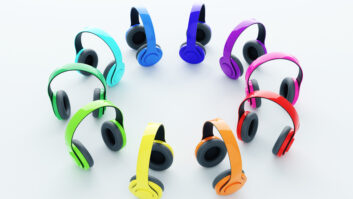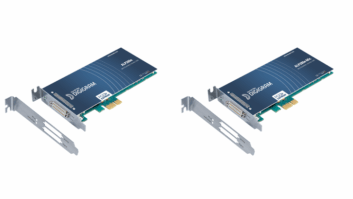Field Report: Heil Sound PR-30 and PR-40
Jun 1, 2005 12:00 PM, By Tim Wright

PR-40
Clear Channel Chicago was recently given the opportunity to review a couple of new microphones from Heil Sound. In case you haven’t heard of the new kid on the block (the company refers to itself as the new sheriff in town), Heil Sound has been making microphones and accessories for the communications and amateur radio market for a number of years. Recently, the company moved into the broadcast market with a series of classic look-alike microphones. In fact, we purchased the Heritage model microphone a year ago for photo shoots for our oldies station. It looks just like the microphone used by Elvis in the 1950s.
The latest offerings for the broadcast market are the PR-40 and PR-30 dynamic microphones. Designed for performance without the associated cost, the economy version, the PR-30 boasts a frequency response from 40Hz to 18kHz, while the PR-40 lowers that bottom end to 28Hz. Both microphones are an end-fire design with a cardiod pattern. According to Bob Heil of Heil Sound, the microphones were designed to perform like a condenser microphone, but without the phantom power requirements. This makes them an ideal choice for field recordings.
PR-40
Performance at a glance Copper-wound dynamic
Neodymium magnet structure
Steel case
600V impedance
XLR Connector
Internal humbucking coil
-53.9 dB output at 1kHz
1.5� diameter low mass aluminum dynamic element
Frequency response from 28Hz to 18kHz
Weighs 1.2lb with optional shock mount
In an A/B comparison using my voice, I can hear little difference between the two microphones. I made the comparison without microphone processing, and monitored myself with headphones. As with most dynamic cardioid microphones, there is a bit of a proximity effect when working the microphone closely. A quick test of off-axis response showed excellent rejection of unwanted sounds.
Birds of a feather
The PR-40 is by far the more robust of the two microphones, and should stand up well in a tough broadcast environment. It compares favorably in all aspects to the well-known brand of broadcast mics that the industry has accepted as a de facto standard, except that it costs one-third as much. It even fits in the shock mount designed for that other microphone. Heil Sound also sells shock mounts designed specifically for its microphones. The SM-3 fits the PR 40 and the SM-2 is designed for the PR 30.

PR-30
The PR-30 feels lightweight compared to its big brother, but that is not all bad if it is going to be used for field recording. Performance was as expected, and for the price was exceptional.
Because I lack the golden ears possessed by several of our production directors, I passed the PR 40 microphone along for their review.
Bill Cochran, creative services director of WNUA had a chance to work with the PR-40. He noted that it provides ample warmth and more than enough crispness. While his mic processor was set to work with the mics he regularly uses, he found that he could achieve satisfying results with the Heil. Because it is a dynamic mic, he thought of using one for the station’s occasional remote location recording. He could grab a recorder and a Heil mic and be ready to roll with audio that won’t require a lot of tweaking when it’s complete.
PR-30
Performance at a glance Dynamic mic with Neodymium magnet
Steel case
600V impedance
Internal humbucking coil
-52.9dB output at 1kHz
1.5� diameter dynamic element
Frequency response from 40Hz to 18kHz
Weighs 15 oz.
The production director of our three urban stations also put them through some paces, and was pleased with the results. Once again and as was expected, the settings on the mic processor had to be adjusted. He observed that it could not handle really high sound pressure levels, like the high-end German-made mic he uses at home, but he quickly noted that the Heil mics don’t have the same German price tag either.
A fellow employee suggested that it would be really cool if these microphones could be modeled by the software mic modeling companies. This would make a solidly built, good sounding, yet inexpensive microphone even more desirable to the home studio user. Through the software filters it could be made to sound just like that high-end German microphone, or many others for that matter.
Heil SoundP
F
W
E
618-257-3000
618-257-3001
www.heilsound.com
[email protected]
The bottom line: for the money, this is an excellent microphone.
Wright is senior studio engineer at the Clear Channel stations in Chicago.
Editor’s note:Field Reports are an exclusive Radio magazine feature for radio broadcasters. Each report is prepared by well-qualified staff at a radio station, production facility or consulting company.
These reports are performed by the industry, for the industry. Manufacturer support is limited to providing loan equipment and to aiding the author if requested.
It is the responsibility of Radio magazine to publish the results of any device tested, positive or negative. No report should be considered an endorsement or disapproval by Radio magazine.







